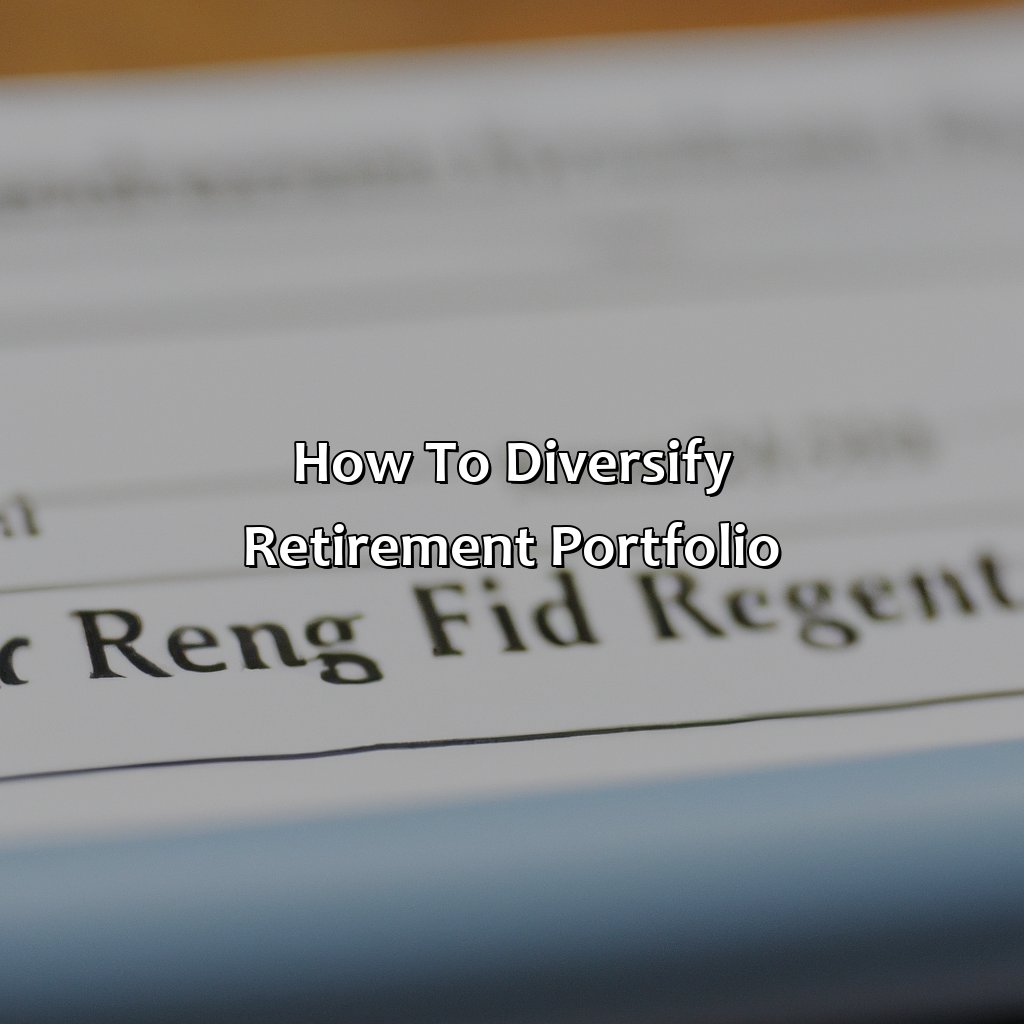How To Diversify Retirement Portfolio?
Key Takeaway:
- Diversifying your retirement portfolio is crucial to mitigate risk and maximize returns. By investing in different types of accounts and asset classes, you can minimize the impact of market fluctuations and inflationary pressures.
- Some common retirement accounts to diversify are Roth IRA, Traditional IRA, 401k plan, and pension plans. Each account has its own tax benefits and drawbacks, so it’s important to consult with a financial advisor to determine the best mix for your individual needs.
- Asset allocation strategies are another important tool for diversification. By choosing a mix of stocks, bonds, cash, and alternative investments, such as real estate or commodities, you can balance risk and reward and achieve better overall returns.
Do you want to secure your financial future and create a diversified retirement portfolio? Discover how to make the most of your investments and ensure long-term financial security.
Importance of Diversifying Retirement Portfolio
Diversifying a retirement portfolio is crucial for long-term financial security. It is important to understand that a varied investment strategy reduces risk and ensures that retirement income is not solely dependent on one asset class. In other words, the diversification of retirement holdings mitigates the potential loss of savings due to economic fluctuations or failed investments.
Investors must consider diversifying their retirement fund mainly by expanding their investment horizons beyond traditional stocks and bonds. They can invest in other assets such as real estate, commodities, and foreign currency, to name a few. Another approach is to invest in a mix of high and low-risk investments that offer consistent returns.
Effective diversification requires a holistic view to develop a custom mix of investments that aligns with one’s retirement goals. Investors must remain disciplined and avoid making emotional decisions that could result in selling low and buying high.
As a factual example, we can take the recent COVID-19 pandemic, which highlights the importance of diversification. The pandemic’s impact on the stock market had a wide range of effects on various industries and assets. Diversification, in this situation, could have enabled the investors to spread risk and minimize losses during such unprecedented times.
To conclude, diversifying a retirement portfolio is critical in achieving long-term financial stability. Investing in a variety of assets while keeping an eye on risk management is necessary to secure financial well-being in the later years of life.
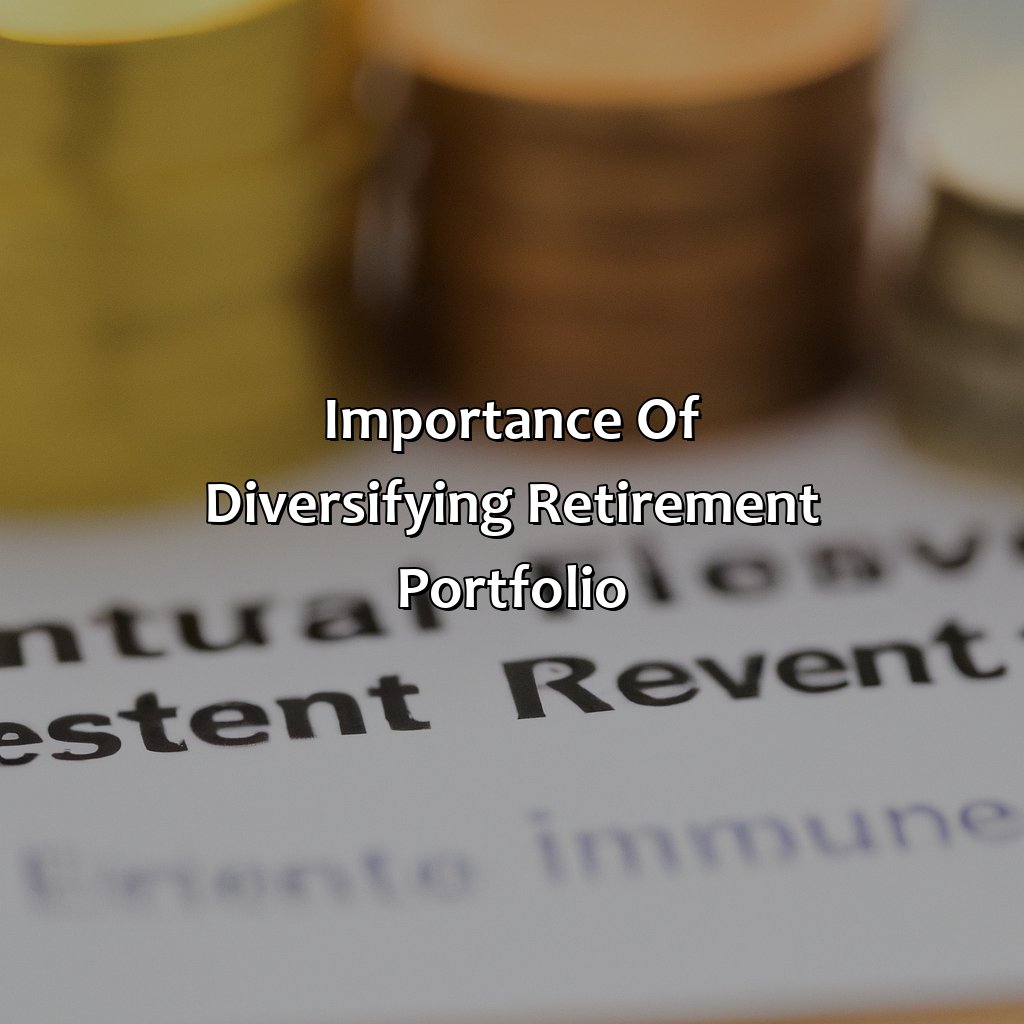
Image credits: retiregenz.com by Harry Duncun
Types of Retirement Accounts to Diversify
You need to know what types of retirement accounts you can invest in, to diversify your retirement portfolio. Here’s a brief overview of Roth IRA, Traditional IRA, 401k Plan and Pension Plans which could help you decide the right ones for you.
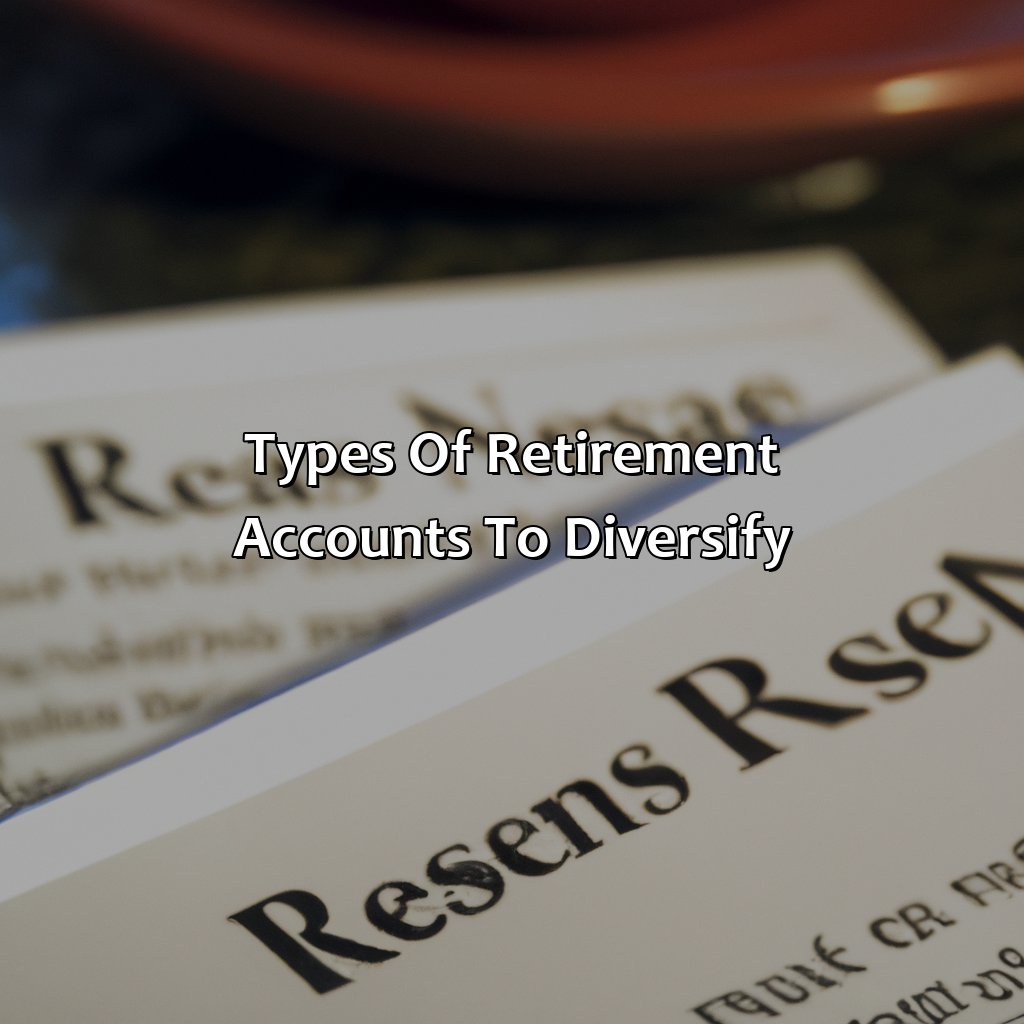
Image credits: retiregenz.com by Yuval Arnold
Roth IRA
One of the retirement accounts that can be used to diversify a portfolio is a tax-free investment account, known as a “Roth Investment Retirement Account.” A Roth IRA is an individual retirement account where participants make contributions with after-tax dollars and taxed upfront at current income tax rates.
The most significant advantage of this type of account is that it allows for qualified tax-free withdrawals, making it a valuable addition to any diversified retirement portfolio. Investors can contribute up to $6,000 per year into this type of account or $7,000 if over 50 years old. There are several eligibility requirements such as income limits and age restrictions that limit who can contribute to this type of account.
It’s worth noting that unlike a traditional IRA, Roth IRA contributors aren’t required to begin taking Required Minimum Distributions (RMDs) during their lifetime. This specific feature makes the Roth IRA ideal for investors who anticipate being in higher tax brackets during their golden years.
According to Forbes, Roth IRAs have been increasing in popularity since they were implemented following the Taxpayer Relief Act of 1997.
With a Traditional IRA, you can save for retirement and still afford to eat something other than cat food in your golden years.
Traditional IRA
One of the retirement accounts to diversify is a classic Individual Retirement Account (IRA). With this account, investors can set aside up to $6,000 each year and an additional $1,000 for those over 50. Contributions are made on a pre-tax basis, reducing taxable income in the present.
Investors must begin taking distributions from a Traditional IRA by April 1st of the year after turning 72. Distributions taken before the age of 59 and a half are subject to taxes and penalties. However, an investor may take out money penalty-free if it is used for qualifying expenses such as education or medical bills.
It’s essential to note that Traditional IRA earnings grow tax-deferred until distribution. Thus, they lose their tax-deferred status once withdrawn. A source reported that nearly ten percent of Traditional IRA holders invest in stocks, presenting both opportunity and risk to investors.
Well, the good news is that a 401k isn’t just the combination of a 4 and a 1 key on your keyboard.
401k Plan
Retire rich with the employer-sponsored qualified retirement plan that allows employees to save for their future, called ‘401k’. This tax-advantaged account needs a minimum contribution of $19,500 annually, and individuals over 50 can add $6,500 as a catch-up bonus.
Investors can choose diversified investment options such as mutual funds, target-date funds, exchange-traded funds (ETFs), individual stocks or bonds based on their risk appetite and financial goals.
Notably, investors can benefit from employer matching contributions to maximize the returns. Conclusively, Investors should seek professional advice before choosing the right 401k plan variant that suits their financial risk tolerance and benefit offerings provided by the employer.
Pro Tip: Taking advantage of any company matching available in your 401k is crucial to your financial future.
Who needs a pension plan when you can just rely on winning the lottery? Oh wait, the odds of that are about as good as finding a unicorn with a 401(k).
Pension Plans
One of the essential parts of a retirement portfolio is long-term savings. Annuities and life insurance contracts can help create a steady source of income after retirement. With the right planning and execution, a diverse pension plan can be created using employer-sponsored 401(k) plans or traditional IRAs.
Innovative pension plans require diversification across multiple asset classes like bonds, stocks, and mutual funds. Alternatively, some people prefer a more conservative approach with fixed-income investments like bonds and CDs. To strike the appropriate balance between risk and returns, it’s essential to calculate how much investment is needed to achieve specific financial goals.
Planning for retirement also involves deciding on the kind of custodian for your money. A self-directed IRA provides more control over where one’s investment dollars are invested than most traditional forms of investing. The fees associated with alternative investments can be higher than those associated with traditional options; thus, it’s vital to consider it when choosing an IRA.
One suggestion for an effective pension plan entails dividing contributions among various classes of assets according to a pre-determined risk tolerance threshold. Contribute the maximum amount allowed by law while taking advantage of corporate matching funds if they are applicable. Finally, stay informed about tax implications as they change from year to year.
Find the right mix of assets like a bartender finding the perfect blend of liquor for a cocktail.
Asset Allocation Strategies to Diversify Portfolio
Diversify your retirement portfolio with a well-balanced approach. Asset allocation strategies can help you achieve this. Our section about these strategies has something for everyone. Check out the options in stocks, bonds, cash, domestic, international investments and alternative investments. Start creating a diversified portfolio that meets your financial goals.
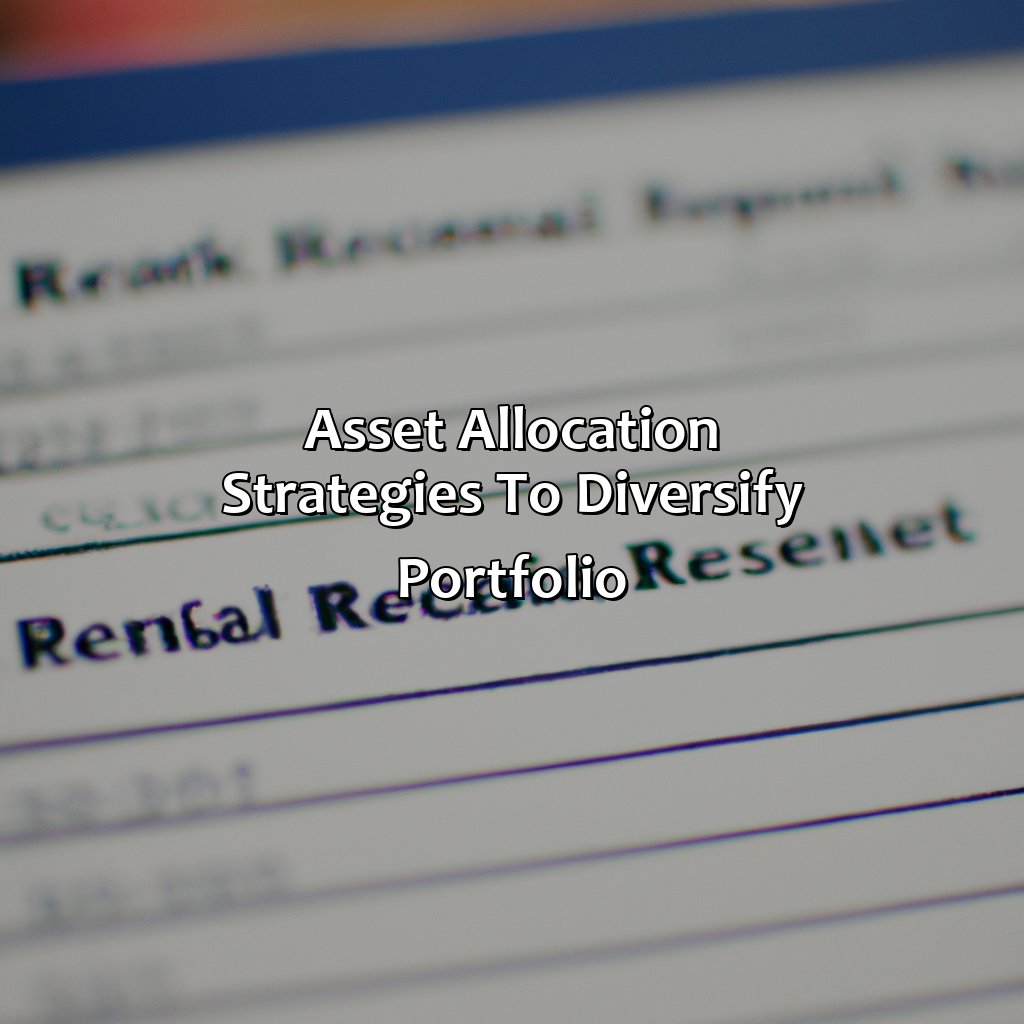
Image credits: retiregenz.com by James Jones
Stocks, Bonds, and Cash
The three primary investment options to diversify portfolios are equities, fixed-income securities, and cash equivalents. Equities or stocks represent ownership in a corporation and are subject to market volatility but can yield high returns. Fixed-income assets like bonds or Treasury bills can provide a predictable income stream but may not appreciate at the same rate as stocks. Cash equivalents including money market funds offer low-risk alternatives for liquidity purposes.
When building a diversified portfolio, it is essential to consider factors, including age, risk tolerance, and financial goals. Investors must weigh their willingness to take risks versus their need for financial stability when choosing appropriate asset allocation strategies.
Investors should focus on creating an investment plan that reflects their time horizon and long-term goals while reducing overall portfolio risk. The goal of diversification is to maximize total return by spreading investments across different asset classes that perform differently under various economic conditions.
A 75-year-old retiree who wants low-risk investments might have 65% of the portfolio in bonds or money market funds with the rest divided between equities and other asset classes suited to his/her comfort level.
In summary, investing in various asset classes through smart choices based on personal factors will result in well-diversified portfolios for both short-term gains and long-term benefits. Mixing domestic and international investments is like having a spice cabinet – too much of one thing can ruin the dish, but the right blend can create a flavorful portfolio.
Domestic and International Investments
Incorporating both local and global investments in a portfolio offers diverse opportunities, ensuring risks are well distributed. Diversification can enhance returns by exposing investors to different economic cycles and industries, reducing concentration risks.
By diversifying between domestic and international investments, investors gain exposure to varying macroeconomic factors that affect countries uniquely. Companies also operate differently globally, providing investment options beyond those immediately available locally.
It’s essential for investors to balance the risk associated with foreign markets compared to their local counterpart. Changes in commodity prices, exchange rates, trade policies and regulations affect global investments.
Investors often benefit from the inclusion of complementary assets like bonds as part of their portfolio alongside equities shared across various companies. It can mitigate short-term losses and add stability through capital preservation.
As a financial advisor once recounted While working with a client looking for income replacement 5 years from retirement, we evaluated global bond funds holdings and created a diversified plan using historical performance data.
Looking for alternative investments? Just ask your neighbor’s kid with the lemonade stand.
Alternative Investments
Investment options other than the traditional ones are called Unconventional Investments. They include Hedge Funds, Private Equity, Real Estate Investment Trusts (REIT), Commodities, and Fine Arts, among others.
Diversifying with Unconventional Investments helps reduce risk and achieve higher returns in the long run.
Unconventional investments provide unique opportunities that may not be available with traditional investment vehicles. For example, REITs distribute profits to shareholders through dividends and capital appreciation in a tax-efficient manner. The commodities market provides a hedge against inflation and currency devaluation.
Age plays a significant role in determining the level of risk an investor can handle while investing in unconventional assets. Risk tolerance increases over time; hence elderly people should consider alternative investments to promote stable income generation during retirement.
Pro Tip: As an Investor, it is essential to recognize that alternative investments require substantially more analysis and due diligence than traditional ones before investing your money.
Diversifying your retirement portfolio may reduce risk, but it won’t protect you from the inevitable: your kids asking for an early inheritance.
Risks Associated with Diversifying Retirement Portfolio
It’s essential to recognize the risks involved with diversifying your retirement portfolio. In this part of the article ‘How to diversify retirement portfolio?’, we explore the various risks. These include market risks, taxation risks, and inflationary risks. Knowing these risks is key to creating a well-rounded diversified retirement portfolio.
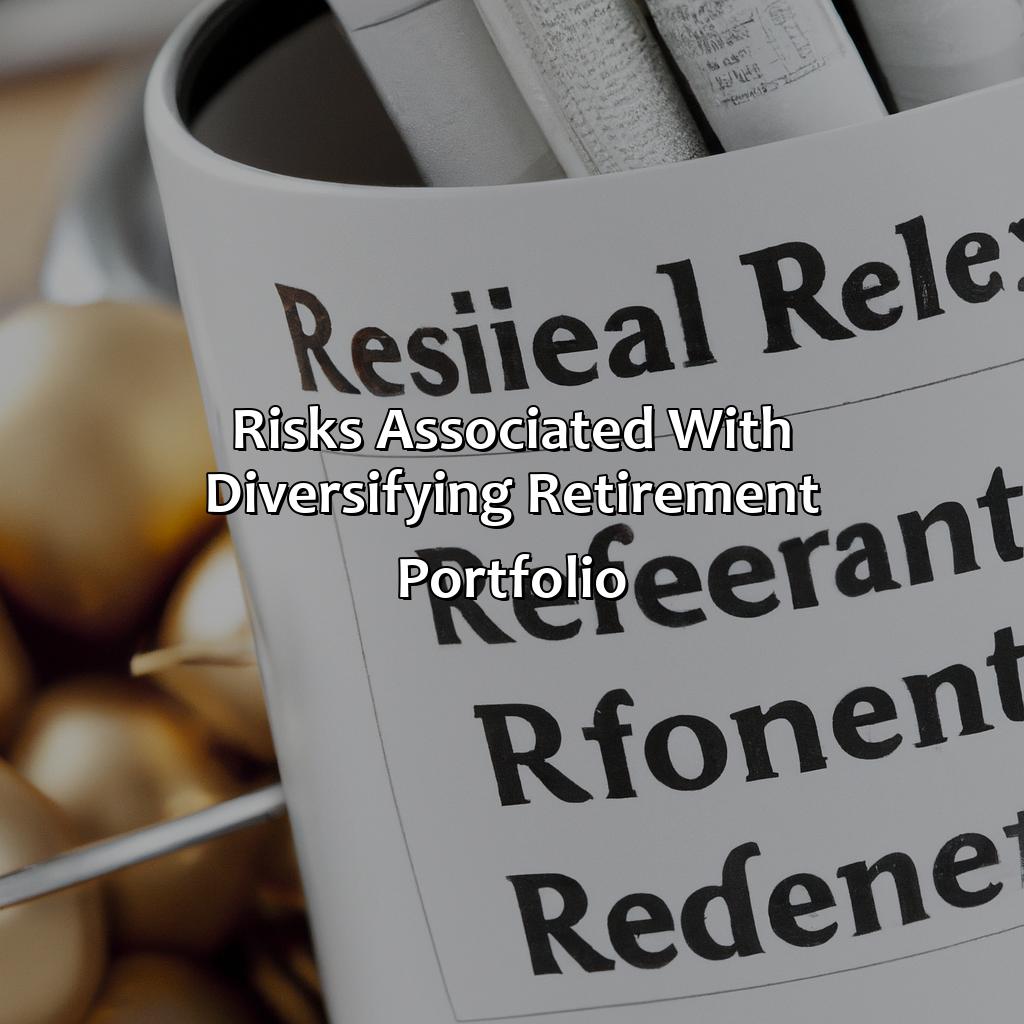
Image credits: retiregenz.com by James Arnold
Market Risks
Investment Risks – A carefully planned retirement portfolio may face several investment risks, such as market fluctuations and economic downturns. These risks can lead to reduced returns or even losses on investments.
To mitigate these risks, it is essential to diversify the portfolio by investing in a variety of asset classes like equities, bonds, and commodities. However, even with diversification, the portfolio may still be affected by market risks such as interest rate changes and inflation.
It is recommended to regularly review and rebalance the portfolio to ensure that it aligns with long-term goals and risk tolerance. Rebalancing helps investors maintain an appropriate mix of assets and reduce the impact of short-term market swings.
Ensuring proper risk management strategies will provide investors with peace of mind knowing that their retirement portfolio is protected from any adverse market conditions.
Take action now to avoid regrets later! Make sure your retirement plan has a diverse range of assets before it’s too late. Why pay taxes now when you can just hope they’ll lower them in retirement?
Tax Risks
When it comes to retirement portfolio diversification, one must be aware of the potential “Tax Implications“. Taxes can have a significant impact on investment returns and retirement income. Different investment vehicles are taxed differently, including 401(k)s, IRAs, and Roth IRAs. Understanding your tax liabilities is essential when diversifying your portfolio.
One must also consider the timing of their retirement income and how it may affect their tax bracket. Taking social security benefits or withdrawing funds from different accounts at specific times can affect taxes in the short term but may also have long-term implications. It’s crucial to work with a financial advisor to plan for these possibilities.
Furthermore, some retirees may face estate taxes upon passing assets down to beneficiaries. Estate taxes can quickly erode an inheritance if not adequately addressed in advance.
A report from the Government Accountability Office found that “an estimated 29% of households age 55 and older do not have any retirement savings or pension plan.” Planning for a diversified portfolio should start early in life to ensure adequate coverage for potential tax risks later in life.
Retiring comfortably? In this economy? Might as well try to find a unicorn riding a rainbow while you’re at it.
Inflationary Risks
One of the major concerns when it comes to retirement portfolio diversification is the risk of losing value due to inflation. As time passes, the purchasing power decreases, and this means that retirees need more money than before to maintain their living standards.
To ensure their portfolio keeps pace with inflation, retirees may consider investing in assets that have historically beaten the inflation rate, such as stocks, real estate, or commodities. However, it is important to keep a balance between risk and reward while selecting these investments.
Another way to mitigate inflationary risks is by considering growth-oriented investment options that offer higher potential returns. Growth-oriented investments include stocks and equity funds which can help investors outpace inflation over longer time frames.
It’s important to remember that while maintaining purchasing power is critical in retirement years, there are other risks associated with diversifying a retirement portfolio like market volatility and longevity risk. Consultation with financial advisors can help create a well-rounded plan for retirement investments without losing significant value during market downturns.
Don’t be afraid of diversifying your retirement portfolio as it can offer greater security and return on investment over time. The fear of missing out on good opportunities should motivate retirees to stay vigilant about managing their portfolios.
Don’t put all your eggs in one basket, unless you want an omelette of disappointment for breakfast.
Tips for Successful Portfolio Diversification
‘Tips for Successful Portfolio Diversification’ is the title of the article, which provides valuable insights on diversifying your retirement portfolio. Here are some tips:
- Starting Early: Start diversifying your portfolio as early as possible to ensure long-term returns and minimize risks.
- Staying Disciplined: Stay disciplined in your investment strategy and avoid making emotional decisions. A well-planned, diversified portfolio will help you ride through ups and downs in the market.
- Rebalancing Periodically: Rebalance your portfolio periodically to ensure that it remains diversified and aligned with your investment goals. This will help you maximize returns and reduce risks over the long term.
By following these tips, you can effectively diversify your retirement portfolio and achieve better outcomes.
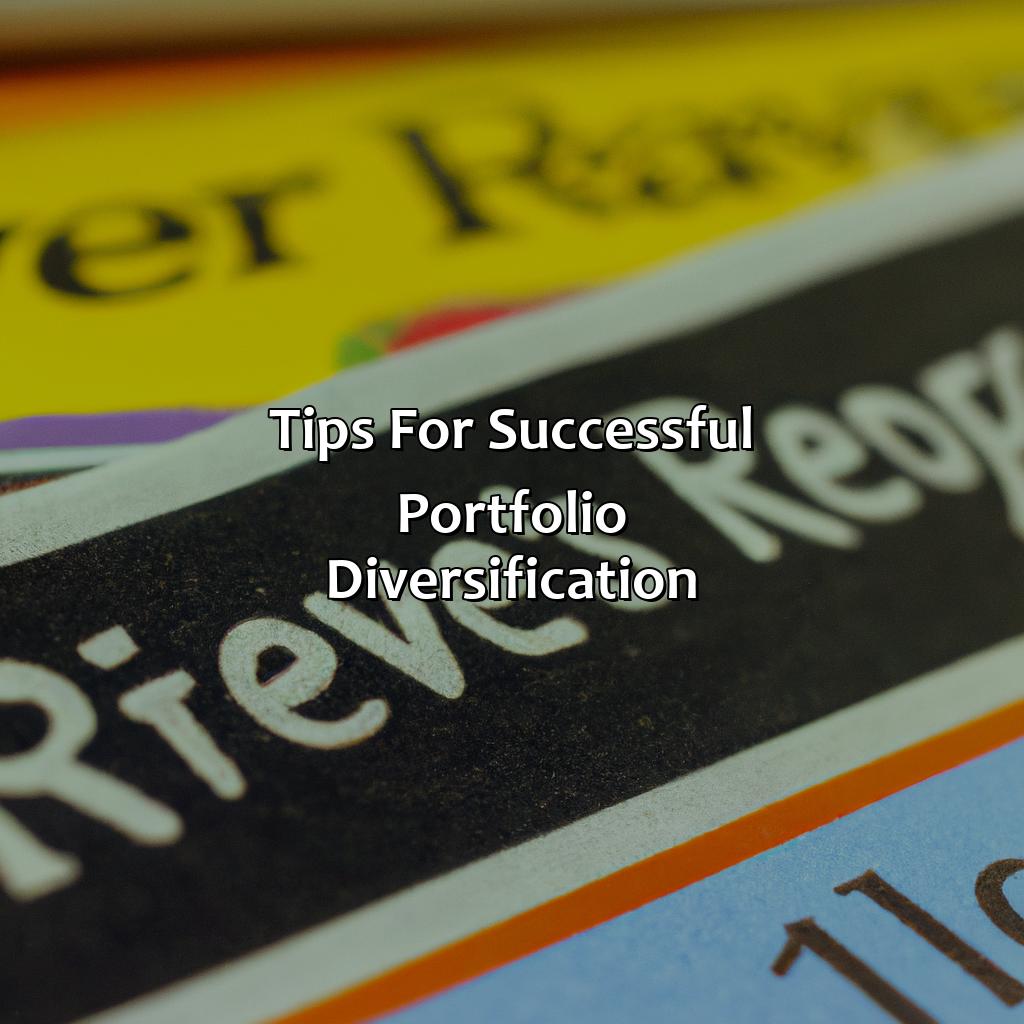
Image credits: retiregenz.com by David Duncun
Start Early
The key to effective portfolio diversification is to act early and mitigate risk factors. Timing plays a critical role in determining the success of portfolio diversification. To get ahead of the game, start allocating your assets prudently across various investment options.
It’s crucial to secure diversified assets for long-term retirement planning. Diversifying a portfolio should be well-balanced, with considerations given to asset allocation, market trends, and future goals. It’s also advised to conduct thorough research and seek advice from financial professionals who can provide valuable insights.
Besides stocks and bonds, real estate and alternative investments present opportunities for diversification. By factoring in both traditional and unconventional investments, investors can offset potential losses during economic downtimes and benefit from surges in financial markets.
Employing smart techniques like dollar-cost averaging, rebalancing periodically, and strategic tax-loss harvesting are proven strategies investors use when diversifying their retirement portfolios successfully. These techniques can providing sustained returns without significant risks due to asset concentration.
Discipline is the key to successful portfolio diversification, unless you enjoy the thrill of watching your retirement crumble like a house of cards.
Stay Disciplined
Retiring soon? Ensure you maintain consistency in your portfolio by selecting suitable investments aligned with your financial objectives. Avoid penny stocks or high-risk investments and always put a fraction of your assets into a diversified foundation of low-cost index funds.
By doing this, you’ll assure that you possess promising investment portfolios to meet the financial goals for retirement years. Also, never deviate your investment process by chasing hot trends or spontaneous market changes.
Stay vigilant of market fluctuations and differences arising in your portfolio’s structure, and research holdings frequently to avoid straying from long-term retirement goals.
It’s also essential to constantly optimize the balance of an investment portfolio as it puts assets at risk-seeking higher returns despite reductions. A diverse & balanced retirement plan helps investors minimize losses while preserving gains over time.
If you don’t periodically rebalance your portfolio, it’s like leaving your spice rack untouched for years and wondering why your food tastes bland.
Rebalance Periodically
Maintaining equilibrium in a portfolio’s asset allocation is essential for successful diversification. Rebalancing your portfolio periodically ensures this equilibrium is achieved and maintained. This process involves selling stock that has been doing well and buying more of those that haven’t been performing to rebalance the portfolio back to its original target allocation.
Timing is Key
Rebalancing doesn’t have to happen frequently, but timing is key. Strive to rebalance annually or several times a year depending on the volatility of the market. However, it shouldn’t be done excessively as it may lead to unnecessary transaction costs and taxes.
Consider Cost and Taxes
While rebalancing, one should consider trading costs and tax consequences carefully. Calculate costs associated with every trade and weigh them against the potential benefits before proceeding.
In summary, maintain equilibrium effectively, time your rebalancing right, and consider trading cost and taxes when carrying out trades. Regularly checking up on your portfolio performance ensures effective diversification by limiting exposure to risks.
Some Facts About How To Diversify Retirement Portfolio:
Diversification involves spreading your investments across different asset classes, such as stocks, bonds, and real estate. (Source: NerdWallet)
Diversification can help reduce risk and volatility in your portfolio, as losses in one asset class may be offset by gains in another. (Source: Investopedia)
Asset allocation is an important part of diversification, as it involves determining the right mix of investments based on your risk tolerance, time horizon, and financial goals. (Source: Forbes)
Rebalancing your portfolio periodically can ensure that your asset allocation stays in line with your investment objectives. (Source: The Balance)
Working with a financial advisor can help you create a diversified retirement portfolio tailored to your individual needs and goals. (Source: US News & World Report)
FAQs about How To Diversify Retirement Portfolio?
What does it mean to diversify a retirement portfolio?
Diversifying a retirement portfolio refers to the practice of spreading out investments across different asset classes (e.g. stocks, bonds, real estate) to reduce the risk of losses in any one area.
Why is diversifying a retirement portfolio important?
Diversification can help protect your retirement savings against market fluctuations and economic downturns. It can also potentially increase your returns and help you achieve your long-term financial goals.
How do I begin diversifying my retirement portfolio?
The first step is to evaluate your current portfolio to determine how heavily it’s weighted towards any one asset class. Then, consider adding investments in different sectors, such as international stocks or commodities. It’s important to work with a financial advisor to ensure that your investments align with your goals and risk tolerance.
What are some common mistakes people make when diversifying their retirement portfolio?
One common mistake is being too conservative and not taking enough risks. Another is not considering the tax implications of their investments. Lastly, some investors may make the mistake of overdiversifying, which can lead to lower returns and higher fees.
Should I make changes to my diversified retirement portfolio over time?
Yes, your investment needs and goals may change over time, so it’s important to periodically review and adjust your portfolio accordingly. However, it’s also important to avoid making changes based on short-term market trends.
What role does age play in diversifying a retirement portfolio?
Your age and retirement timeline can impact the level of risk you’re comfortable taking on. Younger investors may be more willing to take risks, while those closer to retirement age may prefer a more conservative approach. It’s important to work with a financial advisor to determine the right balance for your specific situation.
 Checkout this IRS Loophole
Checkout this IRS Loophole 
